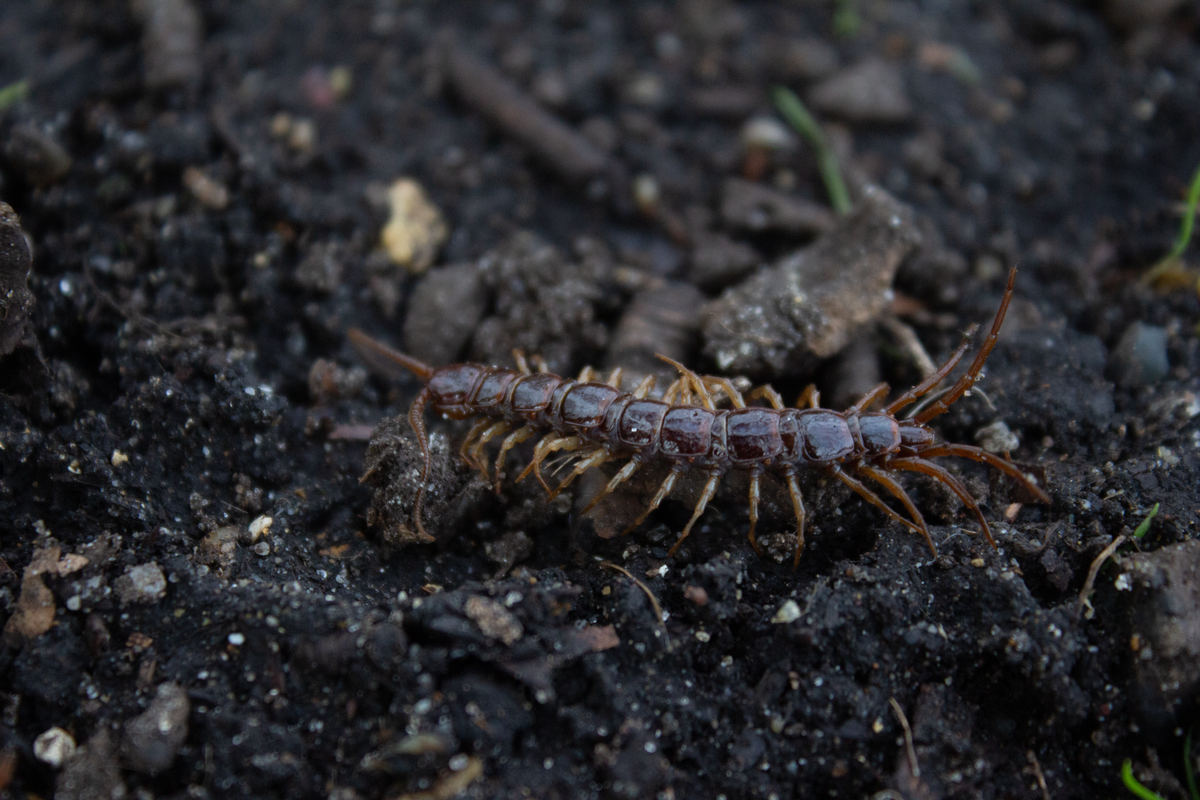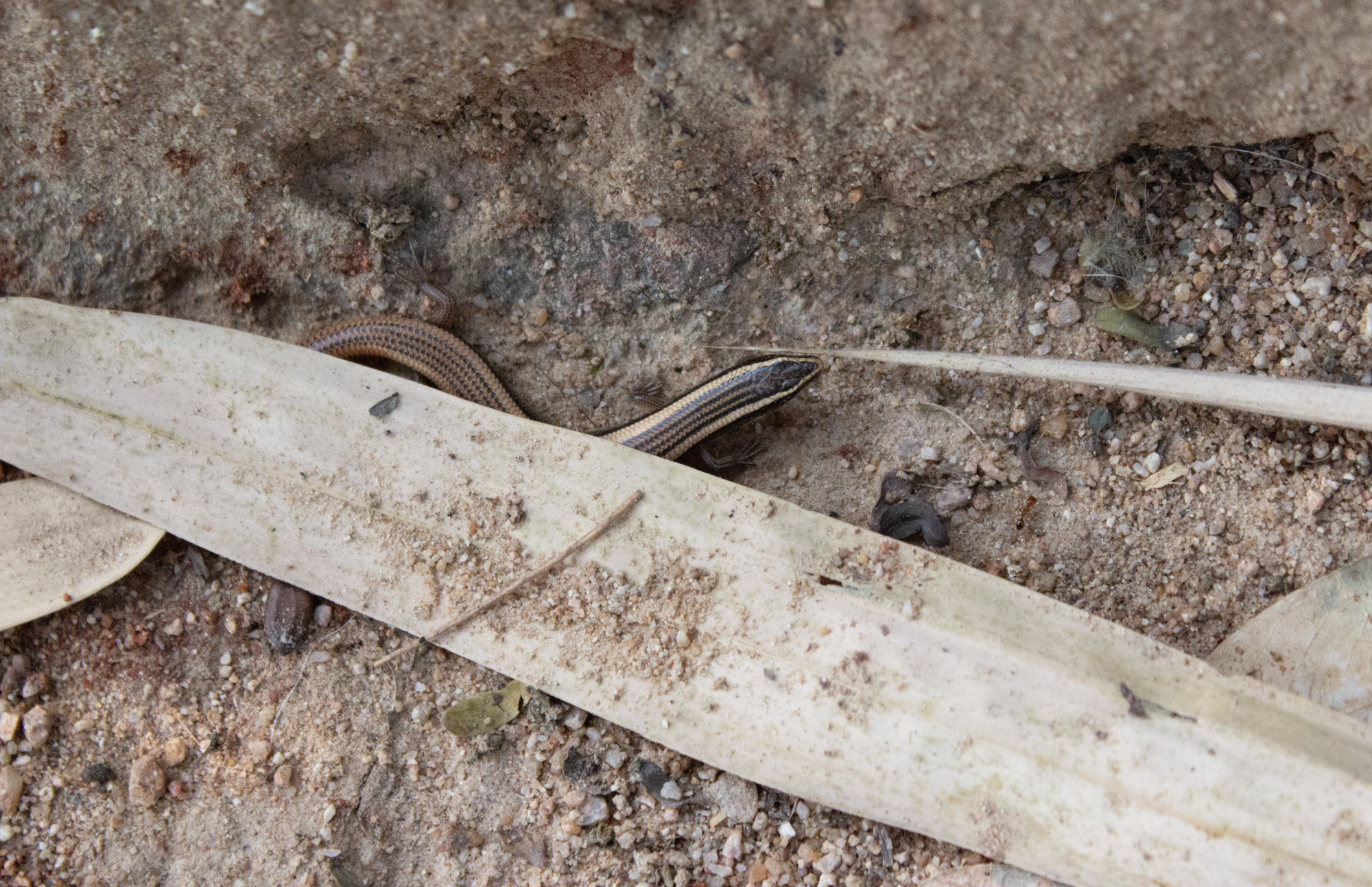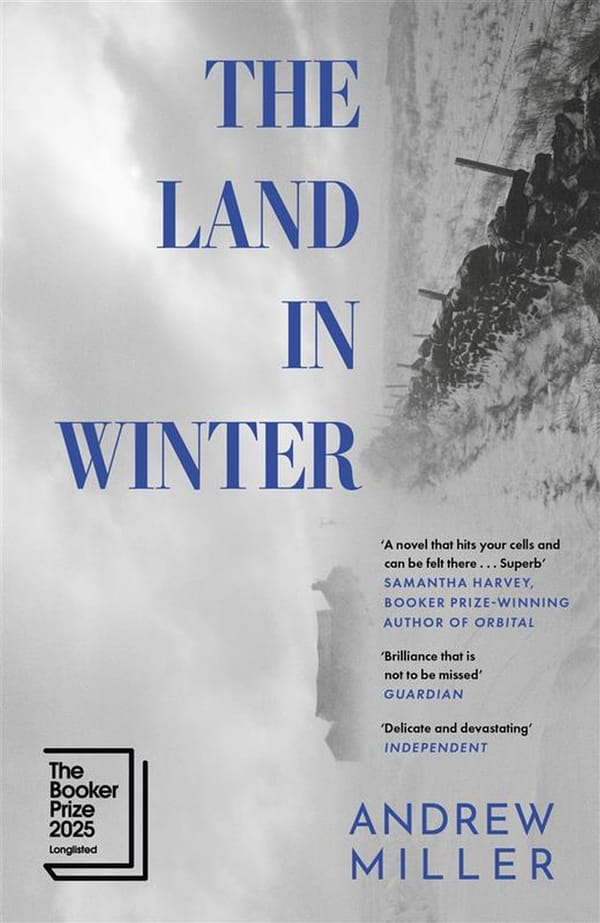Flipping rocks - a beautifully absurd hobby
Delve into the world of invertebrates hiding under logs and rocks.

You are taking your customary evening stroll in a local park. Next to you is a lanky, hoodie-clad figure seemingly doing the same, when they suddenly crouch beside a log and pull it upward. Pausing for a minute, they take a quick scan, and suddenly reach out their hand to grab something. Justifiably suspicious, you watch. They take out a camera and a small glass jar, drop something into it, and start clicking like a madman. Suddenly, they tip the jar on its side, and then lie on their stomach on the muddy ground for several minutes as they continue taking photos. After a few minutes, the surreal scene unfolding before you is over. You are thoroughly confused, and you continue on your way, looking at them one last time.
The series of events above is far from fictitious. Just a few days ago, I was in Hyde Park, London, searching for various invertebrates, when I happened to find a brown centipede (Lithobius forficatus), what is often called Britain’s most common centipede, but always a delight to see scuttling for cover. As is required of us log-lifters, I had to match the animal’s speed by grabbing it as fast as possible, before putting it in a contained environment so I could get some shots. I then released it onto the soil to try taking some in-situ photos before letting it dive into leaf litter. It is hard to compare the feeling of finding something under a log to anything else; exhilaration at peering under some cover to suddenly catch a glimpse of a lizard, amphibian, spider, or centipede on the ground underneath. There is the anticipation as you see the object, approach it, and pull. In that split second, you have to process the information that there is something there, and catch hold of it if required, or simply revel in what you have unearthed (pun intended).

In that split second, you have to process the information that there is something there, and catch hold of it if required, or simply revel in what you have unearthed.
I have had my fair share of interesting sous-cover finds. The first time I lifted a log and actually saw something to my liking was in Richmond Park, London, in September 2022. It was a warm afternoon, and the sun was just beginning to show some desire for the horizon. I was almost robotically turning over some logs when suddenly, as I was just about to replace one, I saw a reptilian head writhing underneath. The excitement rapidly reached an acme as tiny legs and a tail surfaced from under the grains of sand. I had managed to disturb a Viviparous lizard (Zootoca vivipara) from its afternoon siesta. The generally speedy little reptile took a solid thirty seconds to properly awaken and then jolted around before disappearing into nearby shrubbery. I’ve seen four other lizards underneath rocks, three geckos (only one of which was slow enough to photograph), and one skink, all in Hyderabad.
Open a vista to a world you’ve never seen before.
More recently, I had lifted a rock on Hyderabad’s Kasu Brahmananda Reddy National Park’s outer jogging trail. A little black centipede lay on the soil, wondering whether it was worth the effort to escape. I took a quick look and was about to place the rock back when I noticed what seemed to be a mottled eight-legged alien pancake beside my hand, on the underside of the rock. What I had found was a massive female Pantropical Huntsman Spider (Heteropoda venatoria). As I lay the rock down and brought out my clip-on macro lens, she remained quite calm for a few seconds. Then, in a blinding flash, she was gone — under the rock, that is. I turned it over again, only for her to dart to the other end. When I finally managed to flush her onto the main path and get some photos, a considerate dog-walker suggested I put her back into the foliage on the side so she wouldn’t be attacked by pedestrians, bipedal or quadrupedal.
I have no intention of giving up this little pastime. It’s a great way to spend a small part of my day connecting a bit with nature while experiencing little bursts of joy — even an hour of disappointment is instantly compensated by a single interesting discovery. It’s also a great workout — the best animals are often to be found under the largest boulders! Even if it’s just woodlice and earthworms (some of which, mind you, can get almost unbelievably large), there’s always a living creature inhabiting the rich ecosystem that is the bottom of a rock. And while I don’t expect everyone to lift every one they see, it might be a little change of pace every now and then to walk up to a rock, peer underneath, and open a vista to a world you’ve never seen before.









